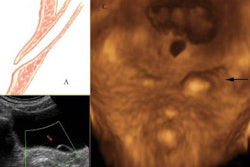DALLAS - Improving the quality and delivery of healthcare while reducing cost is one of the main goals of every provider and payor organization, and a key element to achieving this goal is the sharing of data between payors and providers. Despite the importance of data sharing, payors and providers have historically had difficulty working together in this area, according to an e-session presentation at the Healthcare Information and Management Systems Society (HIMSS) conference on Sunday.
Payors and providers will eventually be forced to share data and collaborate during the care process in order to meet their jointly held aims of improved quality of care and lower costs, wrote Paul Oates, vice president of information management for Cigna Healthcare in Bloomfield, CT.
Oates, who noted that he has been in both the payor and provider camps during his career in the healthcare IT industry, wryly observed that the two sides do not understand one another very well.
"While both sides have the right interests at heart -- they both want to make patients well, cost-effectively -- they are often prevented from doing so because the process to share data between them is woefully inefficient," he wrote.
The data maintained by the two groups, although interrelated, is vastly different in scope. Providers hold data that is related to the course of treatment delivered by that provider; payors hold data that is related to all the treatments received by a patient. In essence, according to Oates, payors have data that is a mile wide and an inch deep, while providers have data that is an inch wide and a mile deep.
For economic reasons the two datasets are converging. This does not mean that payors will practice medicine, Oates wrote. He sees a role for payors to apply clinical rules and evidence-based medicine to identify gaps in care and make recommendations to providers. In radiology, some payors are requiring all imaging providers to adhere to American College of Radiology appropriateness criteria and quality control standards as a requisite for reimbursement.
The main barrier to effective and efficient collaboration between payors and providers is the difficulty of information-sharing and assembly of a patient's care record across the healthcare spectrum. Inconsistent vocabulary, lack of standards, no definitions of common processes, and some legal barriers are the documented reasons for this barrier, according to Oates.
Part of the problem is that payors tend to focus on benefits administration and employer concerns. In addition, antitrust laws and competitive concerns make open dialog difficult. As such, Oates wrote that payors have not had many successes in industry-based collaborations, nor do they discuss HL7, Integrating the Healthcare Enterprise (IHE), or other relevant standards and processes.
"Payors need to play catch-up and become engaged in the discussion (of standards and processes)," Oates wrote.
He believes the first area in which payors and providers should work together is the continued definition and utilization of HL7. HIMSS has noted that while there are many existing standards for exchanging clinical data, there are no widely accepted standards for either an individual electronic healthcare record (EHR) itself or for an abstract/summary EHR that might be shared among providers.
Although technology standards have been proposed for EHRs, there are three questions that remain to be answered: what is the shared clinical content; what are the rules for including content; and what are the rules for sharing that content? The answers to these questions must come from payors and providers, as they are clinical and business standards rather than technology standards, according to HIMSS.
"Payors and providers should collaborate in answering these questions posed by HIMSS, as business process is the first area of agreement necessary before pursuing technical standards," Oates wrote.
Oates further advocates that payors should come to the IHE table and participate in demonstrating true cross-enterprise interoperability of cooperation yields. He believes that payor inclusion in the integration profiles should be a goal for 2006.
Oates believes that external pressures, such as those brought by employer groups and legislatures, and improved standards will drive payor and provider collaboration. Rather than waiting to be forced into partnership, some providers and payors have entered into discussion on areas of common concern.
On a local level, collaboration between payors and providers is paying handsome dividends. Oates cited the example of a collaboration between providers in Michigan and Blue Cross Blue Shield. By working together on improved business processes and tools, the group was able to see a 15% decline in claims denials, he reported.
"More importantly -- and here's the surprise -- a true camaraderie was developed between the payor and hospital staffs," Oates wrote.
By Jonathan S. Batchelor
AuntMinnie.com staff writer
February 14, 2005
Medicare panel endorses national privileging, Stark changes,
ACR to pitch Congress on 'designated physician imagers' for Medicare, January 6, 2005
Nation's largest insurer to adopt ACR criteria, accreditation, December 9, 2004
HIPAA TCS standards float in compliance limbo, October 17, 2003
Looming HIPAA rule highlights healthcare business associates, February 11, 2003
Copyright © 2005 AuntMinnie.com



















